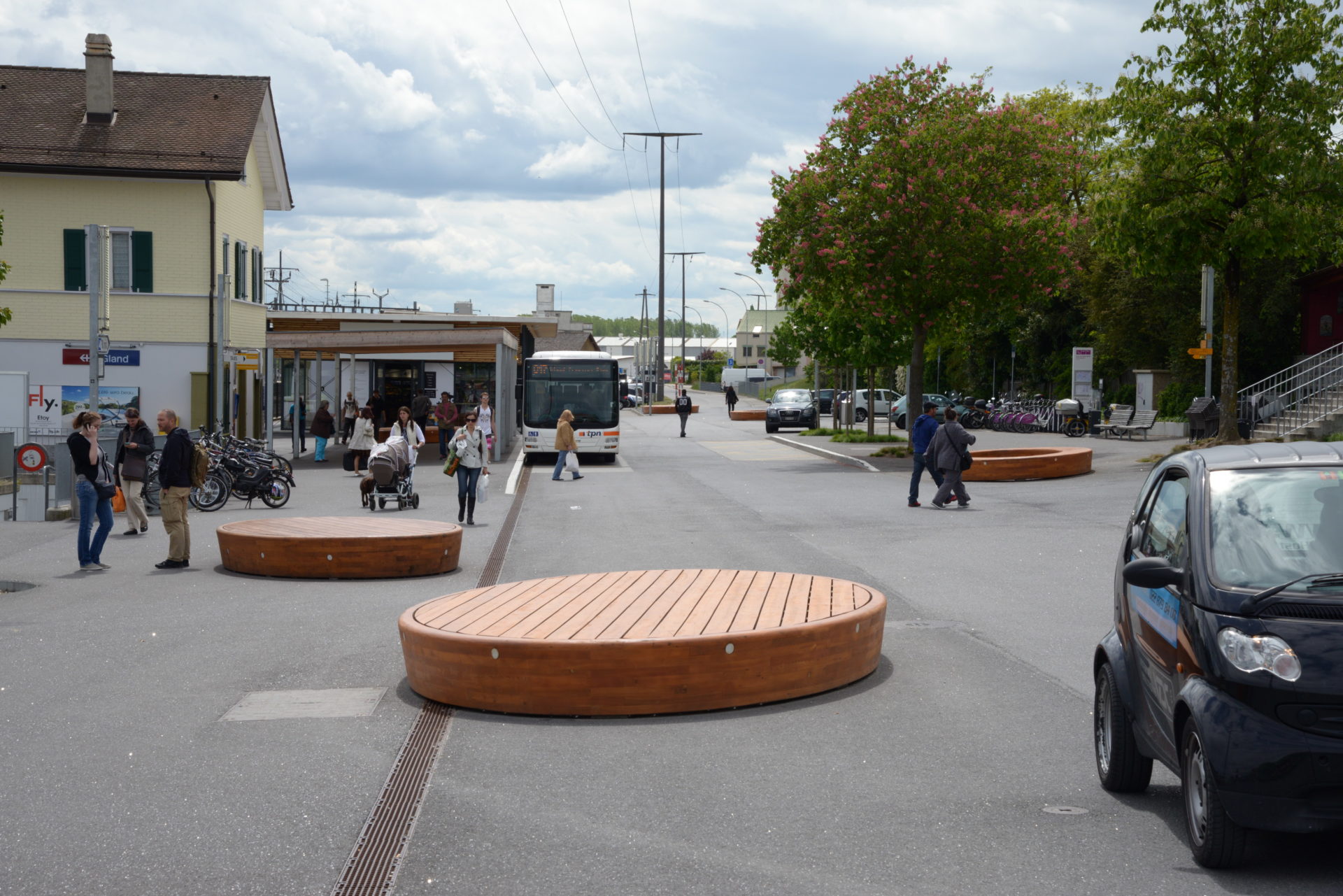Train station and meeting zone: a winning duo
Meeting zones enable public space around stations to be reclassified, to promote mobility and pedestrian flow as well as to create new living spaces and harmonious hubs.
1. A winning duo
Stations are developing and new hubs are emerging. In addition to being transport hubs, they also attract businesses, offices, shopping locations, restaurants and sometimes accommodation, too. They are home to new forms of mobility: self-service bike hire, facilities to charge electric cars and bikes, self-service cars etc. Passenger flows are increasing and these need to cohabit harmoniously with the different forms of mobility.
Good management of public spaces is therefore a central issue. Planning a meeting zone around a station has several objectives:
- Improve flow management: train stations feature heavy concentrations of pedestrian flow. Setting up areas for interaction for them is necessary for the proper management of flow and connections. One of the distinctive characteristics of train stations is how they alternate between times of heavy pedestrian flow as trains arrive and depart, and periods of calm. For the majority of stations, users arriving by car represent less than 10 to 20% of flow. As such, priorities need to be reconsidered for layout to encourage a healthy balance between the modes of transport. Meeting zones can help these movements more fluid. Upgrading roads and the space available as well as reducing speed and traffic contribute to lending these spaces a calmer character.
- Promote combined mobility and switching between modes: meeting zones are entirely compatible with public transport traffic. Their implementation alleviates the difficulties associated with intermodality and reduces the distances between modes of transport. In the case of large train stations, meeting zones promote effective inclusion of pedestrians.
- Enhance the sense of togetherness: creating new, high-quality public spaces and a pleasant atmosphere for pedestrians encourages users to stroll around, take a break and meet others in new spaces. Users take possession of the public space. A more spacious meeting zone provides a calm environment for restaurant terraces and creates a lively central point where locals can gather.
- Strengthen safety and user comfort: pedestrians, cyclists and users of public transport find themselves in a reassuring, well laid-out space for their security and comfort. The balance of power is shifted in favour of pedestrians who are given priority. Reducing speed around stations has demonstrated its relevance over many years: pedestrian flows, taxis, buses and cars can operate harmoniously together.
- Decrease local traffic: setting up a meeting zone goes hand-in-hand with a decrease in car traffic and makes it possible to eliminate transiting traffic. The street looks less like a road. Meeting zones act like buffer zones around train stations. They promote accessibility to stations but keep transit traffic at a distance. So it’s a win-win situation.
- Convert public spaces towards pedestrianization: setting up a meeting zone can form part of the re-envisaging of such spaces with a view to pedestrianization and act as a test phase for its appropriation by the public, as has been the case in Delémont (see photo).
- Strengthen the appeal of the station: converting the public square and roads into a meeting zone creates a positive, welcoming and decisive first impression. The spaces situated around stations have been neglected for a long time and has often led to unattractive areas: car parks, drop-off zones and uninviting wastelands, which sometimes tarnish the image of the train station itself. A meeting zone can enhance nearby public spaces and add value to neighbouring businesses, restaurants and residential properties.
A meeting zone is therefore a decisive element in the layout around a station whatever its size. Having such areas helps make a train station fit for the 21st century, not only as a transport hub, but also as a living space emblematic of the town.
More information is available at https://www.ate.ch/themes/rues-pour-tout-le-monde/zones-de-rencontre/gare/
Françoise Lanci-Montant
Bureau-romand
Swiss Association for Transport and Environment (ATE)
Date : 26.11.2018

